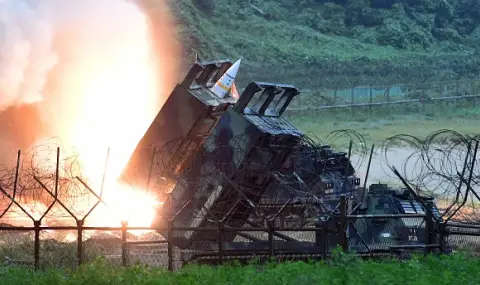The arrival of long-range ATACMS missiles in sufficient numbers will allow Ukrainian forces to degrade Russian logistics and threaten Russian airfields in deep rear areas, although months of delay may have given Russian military time to offset the potential operational impacts that ATACMS will have on Ukraine.
This is according to the Institute for the Study of War (ISW) daily analysis.
On October 17, 2023, Ukraine first used US-supplied ATACMS long-range missiles to strike Russian targets in occupied Ukraine, targeting Russian airfields in the occupied cities of Berdyansk and Luhansk.< /p>
Ukrainian forces likely aimed to cut off Russian air support for localized Russian offensive efforts at the time, but were not equipped with sufficient ATACMS to conduct a sustained effort to intercept Russian air assets on a large scale.
Cluster-armed versions of ATACMS missiles allow Ukrainian forces to launch more effective airfield strikes that can destroy Russian aircraft and other assets on a larger scale than individual missile strikes on individual aircraft.< /p>
These strikes could force Russian forces to move aircraft further from the front line, although this would likely be much more significant for Russian rotary-wing aircraft than for most Russian aircraft, which have a much longer range. .
Russian forces used helicopters to considerable effect in repelling Ukrainian mechanized attacks during the Ukrainian counter-offensive in Zaporozhye Oblast in the summer of 2023, but have used far fewer helicopters since then.
The arrival of the ATACMS long-range missiles could also pose a significant threat to Russian ammunition depots in the rear areas and could force the Russian command to choose between strengthening existing depots and further dispersing depots in occupied Ukraine .
It is possible that Russian forces have already adapted to potential new Ukrainian strike capabilities following the use of the ATACSMS in October 2023.
Ukrainian strikes against Russian logistics or Russian air assets in deep rear areas, however, are likely to be operationally significant only if Ukrainian forces successfully coordinate them with ground operations to take advantage of degraded Russian capabilities as a result of the strikes.
On April 24, US President Joe Biden announced that the US would begin sending military equipment to Ukraine "within hours" after the signing of a bill that will provide aid to Ukraine in the amount of about 60 billion dollars.
In March 2024, the United States reportedly provided Ukraine with an unspecified number of long-range ATACMS missiles, some of which Ukraine has already used to strike Russian targets in deep rear areas.
Western media reported that senior US officials said that in March 2024, the United States secretly delivered to Ukraine an unspecified number of ATACMS missiles with a range of about 300 km.
A senior US official said Ukrainian forces have since carried out strikes with ATACMS missiles at a Russian military base in occupied Crimea and an unspecified target east of occupied Berdyansk, Zaporozhye Oblast.
On April 24, Russian authorities arrested Deputy Defense Minister Timur Ivanov on bribery charges, although other Russian sources said Ivanov was suspected of treason.
On April 23, the Russian Investigative Committee announced that Russian authorities had detained Ivanov and were investigating whether he accepted a bribe, and on April 24, Moscow's Basmansky Court officially arrested Ivanov on bribery charges.
Russian ultra-nationalist military bloggers largely celebrated Ivanov's arrest and used it as an opportunity to publicly criticize the Russian Defense Ministry. Russian military bloggers largely called on Russian courts to bring Ivanov to justice for his crimes and lamented the failures of the Russian Defense Ministry during the war, describing the arrest of a Defense Ministry official as long overdue.
One of the prominent Kremlin-linked military bloggers tempered the other military bloggers' celebrations by asking how much had changed since the Russian MoD had replaced many other officials during the war, including some personnel in the field of defense and military personnel between posts instead of firing them outright.
